Sublime elegance with a touch of French flair
I’ve had a somewhat strained relationship with Fat Chance bikes over years. The first few Fats I restored all suffered some damage during shipping, mechanical faults while riding out to do photo shoots or the like. Fearing an imminent curse, I put my personal Fat projects on hold. A couple years later I did finally complete a nice 1990 Yo Eddy (see link here) which I rode for a while living back in California. Ultimately it wasn’t a bike I reached for above other steel bikes in the quiver and it was relegated to loaner status, and ultimately I ended up selling it back in 2017. I still have a Wicked I use as a commuter and for that purpose it’s really a great fit, however I don’t think I would like it as much a dedicated mountain bike. Since then I haven’t had the opportunity to work on any of the famous New England made whips. I did hold onto a Team Comp frame for a long time but finally decided to throw in the towel earlier this year when I realized it would be another couple of years until I would get around to it. I’m still hanging onto a couple suspension correct BOI forks in hopes of someday finding a late model (1999-2000) Yo frame or an early Fat Titanium to marry them to. I really liked the idea of the Team Comp and was a bit remorseful about selling it, and so when a good friend offered to loan me his bike for a while I jumped at the opportunity
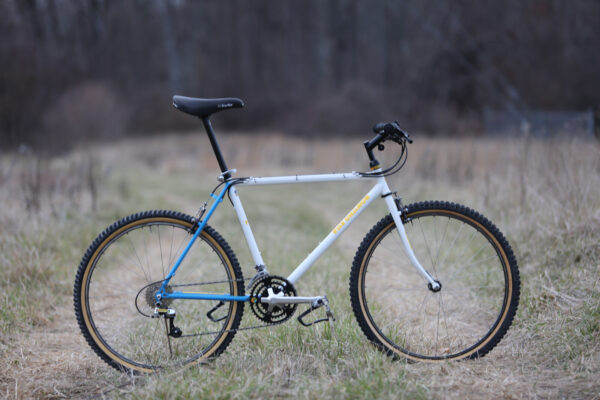
For those of you unfamiliar with Fat Chance, you’d be hard pressed to throw a rock into the showroom at NAHBS without hitting a bike whose lineage can’t be traced back to Fat Chance. Chris Chance and his newly born-again Fat City Cycles brand are hailed by many as not only responsible for some of the best riding, and most desirable vintage mountain and road bikes, but have directly or indirectly inspired dozens of others to start out on their own, many of who still churn out some of the best bikes in the world. As kid I wasn’t a huge fan of Fat, chalk it up to the fact that they were not very common in central PA or that they didn’t have a huge presence in the then burgeoning racing scene. Either way I didn’t have a chance to experience them in my formative years and so the bikes don’t resonate as much with me today. That being said I’ve come to appreciate the craftsmanship and the point of view that Chris brought to the scene with his brand and how it served as a counterpoint to the then dominating NorCal way of doing things.
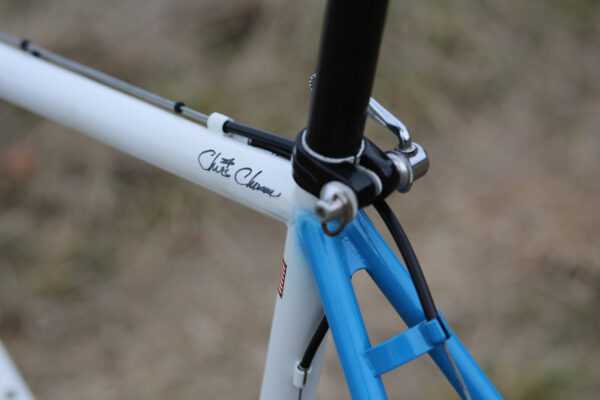
With models like the Wicked, Yo Eddy, Slim Chance or Fuckn Fat Chance, and a myriad of vibrant paint jobs featuring wild geometric patterns and multi color transitions, Fat Chance was not your average bike manufacturer. Though committed to quality and performance the brand was always out on the fringe of the fledgling sport of mountain biking and did their best to stave off the mainstream trends.
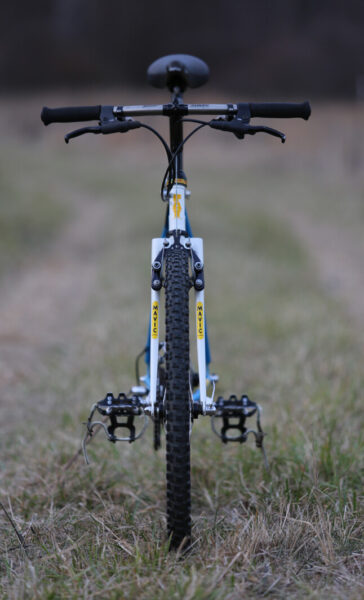
The Yo Eddy and Wicked are perhaps the best known Fats these days and collectors often times have multiples of each bike in various paint schemes, just because you know… why not? However, if you want one of the coolest and rarest Fats, look no further than the Team Comp. Made only for a short time in the mid to late 80s and in small quantities the TC stands out among an already pretty sweet lineup. Probably best described as a cross between a Wicked and Yo Eddy the TC was Fat Chance’s top of the line race bike prior to introducing the Yo Eddy. The frame borrowed the Wicked’s geometry (71/72 angles, 17 1/8” stays) but used Tange Prestige tubing on the main triangle and fork vs the True Temper 4130 chromoly on the Wicked. This particular frame has the optional roller cam mounts and GP Wilson forged dropouts on both the frame and the optional box crown fork.
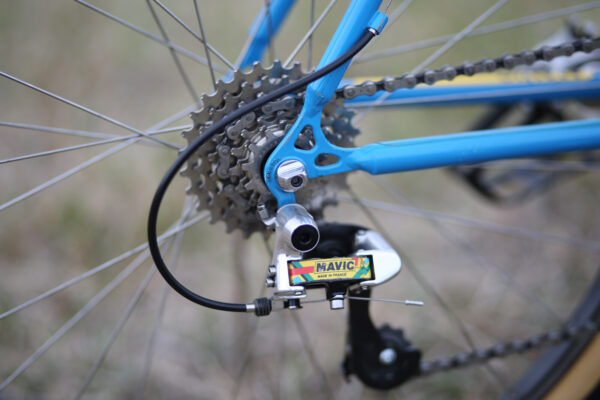
I just love this derailleur. Seriously, if I could find one and some cranks I’d run them on my Wicked in a heartbeat… just about the damn coolest derailleur ever made!
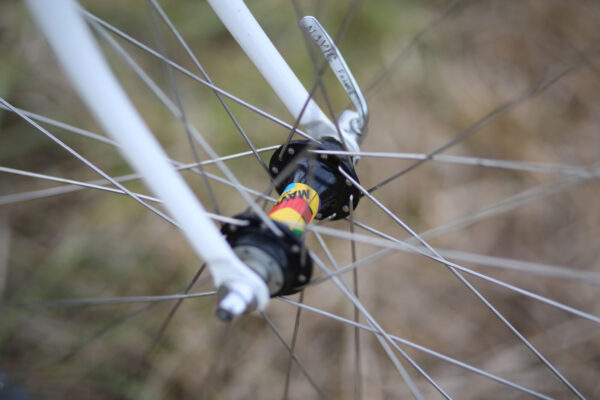
At the time of this photo shoot I had yet to ride this bike and although it was ultimately too small the ride was really fabulous, enough to make me get a larger TC which I’m currently restoring exactly the same as this one. The thing that I want to talk about right now is the drivetrain. There isn’t a rarer or more odd set of components than Mavic’s short lived Dakar off road group. Most know Mavic for their rims, wheels or hubs but very few people know that they made drivetrain components.
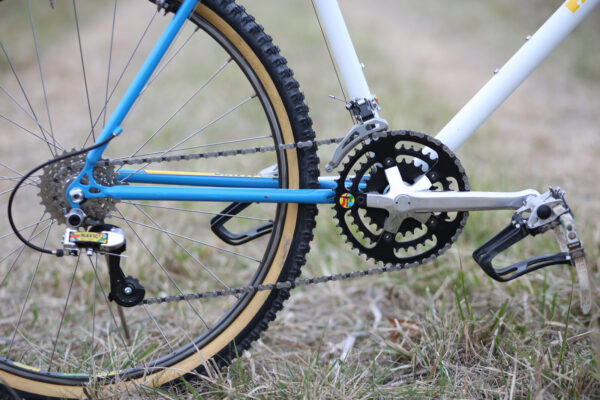
At best these parts had the same success in the mountain bike market as Renault did in the US automotive market, ok maybe not that bad. Their main claim to fame was getting spec’d onto Greg Lemond’s mountain bikes in the early 90s. I’ve always liked Mavic hubs and bottom brackets, they had some of the smoothest and reliable sealed bearings available back then. The headsets were nice as you could in theory tighten them on the trail with just an allen wrench, which was a nice feature. The main marketing angle for their components was the fully serviceable design. Mavic had always done this on their road bike components and I guess they had hoped that this would play well in the rugged and dirty world of mountain biking. Another interesting part was the virtually infinitely adjustable, under bar wishbone shifters. You could adjust the location and range of motion of the paddles to suit your specific needs. In practice this was actually quite difficult to setup and not so much a feature. Mavic never offered brakes or levers (cassette hubs and cassettes did come out later) so this bike has Shimano brake levers and WTB roller cam brakes. In the end these parts proved too heavy and couldn’t compete with Shimano and Suntour in terms of performance and usability. After maybe two years Mavic dropped the drivetrain and focused on rims and wheels, probably for the best.
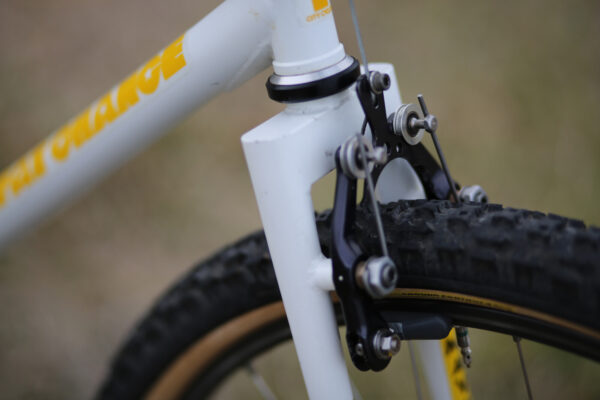
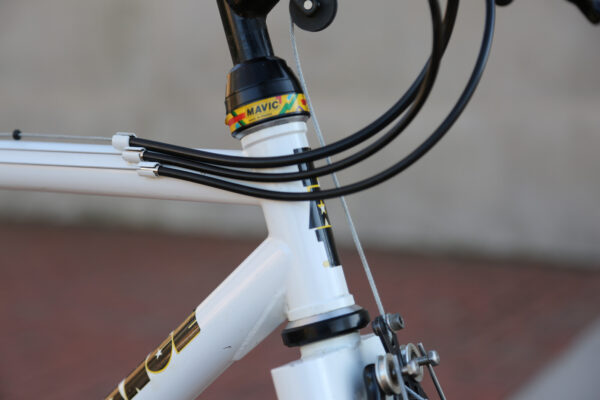
Unlike similar options from Stronglight which used needle bearings Mavic used traditional ball bearings housed in plastic races. Though not as smooth as their hubs or bottom brackets the Mavic headsets were known to be reliable, and quite striking to behold.
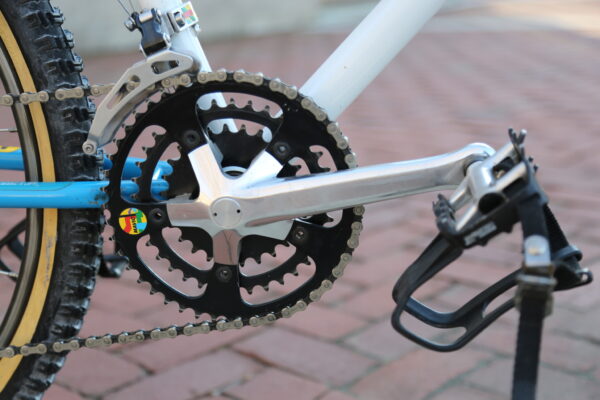
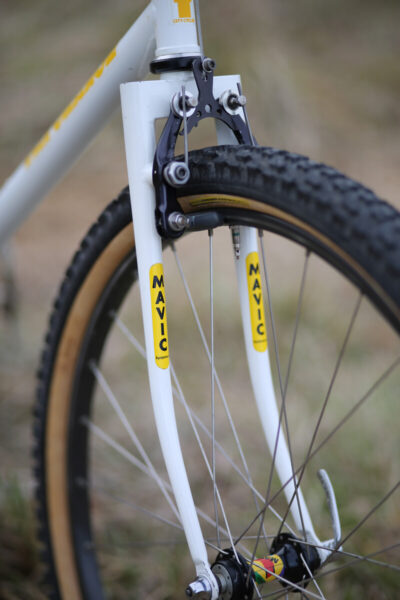
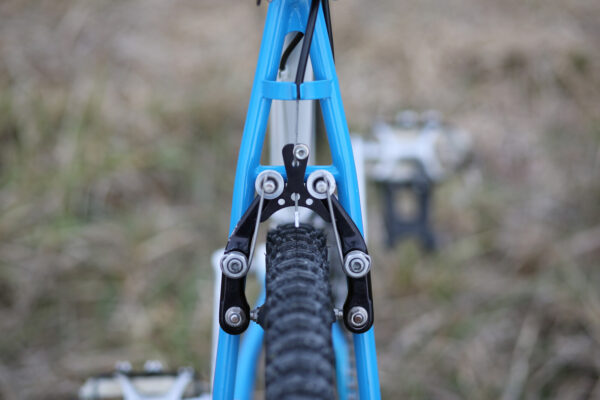
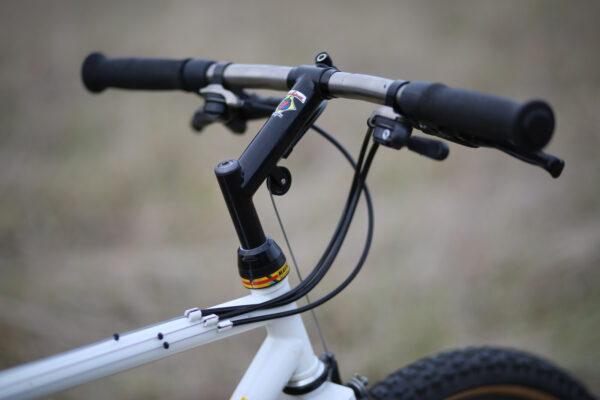
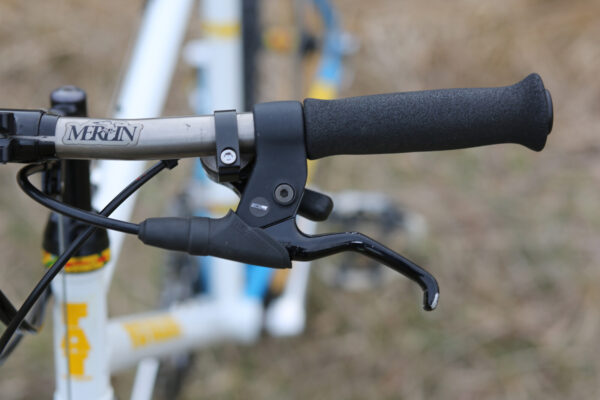
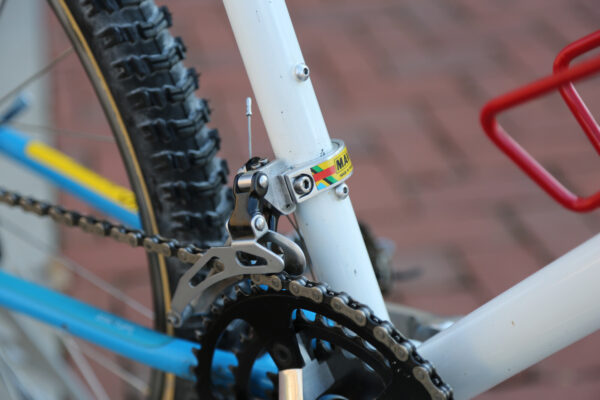
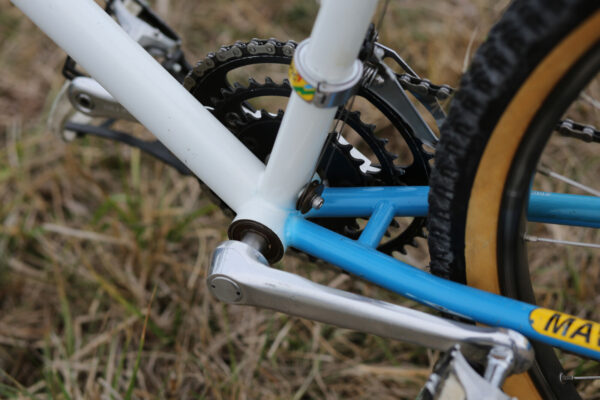
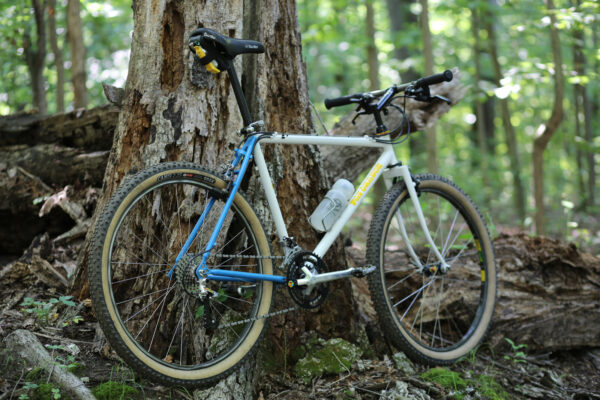
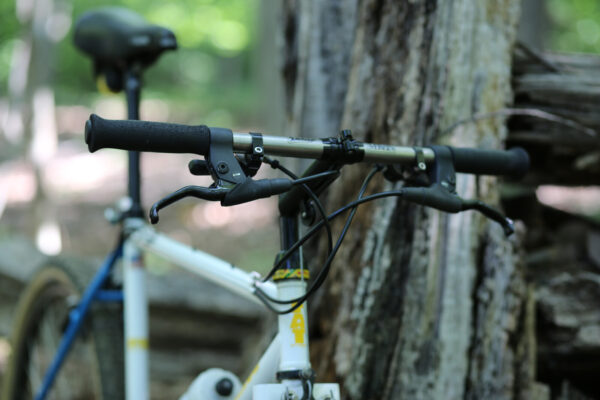
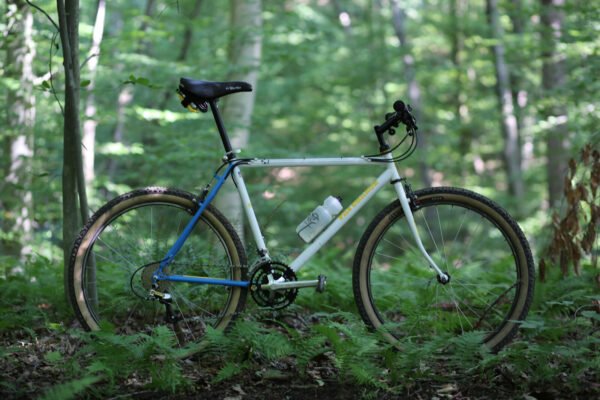
I did spend a few days on the trails with this particular Team Comp before ultimately selling it on to a German collector. The thing that struck me the most about this bike was how incredibly light the front end was, clearing obstacles was very effortless. I was not particularly impressed with how well it tracked, the rear end felt very lively and didn’t always seem to fall where I thought it might,. On groomed single track it was a lot of fun, very springy feel and fun to either coast or flat out attack. The Mavic drivetrain took a little bit to get used to, but it worked quite well. So much so that when I sold the bike I stripped the Mavic parts in hopes of transferring them onto my next TC. The TC rode very similarly to my P-23, but will give a nod to the P-23 under load as it seemed to track true and had a bit less flex. I will give style points to the Fat for the fork and GPW dropouts, but in general the bikes were very similar.
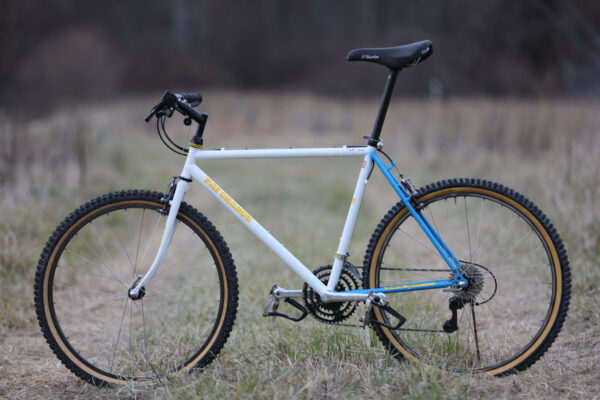
Bikes like this Team Comp may not have been ground breaking or innovative in any particular way but it perfectly summarizes what’s so great about this era. Builders and manufacturers pushing forward with materials, construction, geometry and components, in some cases resulting in a winning mix and other times in historical footnotes. I’d like to think this bike is more than a footnote, but rather an entertaining chapter.
Completed Projects:
Current Projects:
Newsletter sign up:
Subscribe to our newsletter to receive info on our latest projects and new podcast releases
